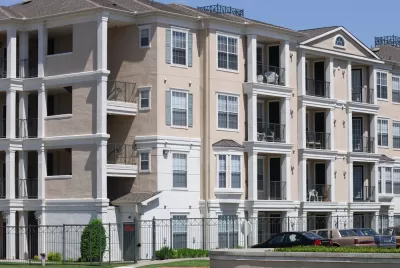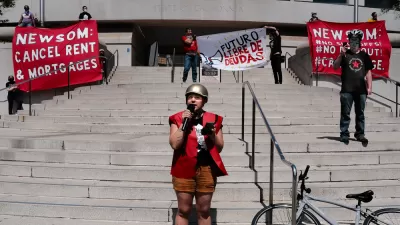What happens if the federal rental assistance money available to renters doesn’t make it to them before the moratorium expires? And how did the 2020 eviction predictions pan out?

After a monthslong game of “kick the ban,” the eviction moratorium issued last September by the Centers for Disease Control and Prevention (CDC) is set to expire July 31 after two extensions (one in March and another last-minute, last-time stopgap reprieve at the end of June). CDC Director Dr. Rochelle Walensky said this will be the “final extension of the moratorium,” which, when it ends, will leave millions of renters at risk of losing their homes and millions in federal rental assistance money undelivered.
About 15 percent of renters in the U.S. owe back rent. On average, they owe about $3,400, according to the National Equity Atlas, though many owe tens of thousands. Those renters represent more than 11 million adults who will be left vulnerable to eviction once the eviction ban lifts Aug. 1. Of those households facing an eviction threat, the most at-risk are headed by Black and Brown people, and single moms. For instance, workforce participation among women plummeted by 57 percent during the pandemic, and 80 percent of the 1.1 million Americans who left the workforce in September 2020—when schools started back up while the pandemic raged—were women. Both demographics are evicted at a disproportionately high rate: Black adults make up just 21 percent of America’s renters, but are listed as defendants in 35 percent of all eviction filings, and studies have shown that the probability of a household with children receiving an eviction notice is “significantly higher” than those without.
How 2020 Predictions Panned Out
While 11 million is a big number, it sounds like far fewer than the 30 million to 40 million individuals estimated to be at risk of eviction in an August 2020 report published by the National Low Income Housing Council and the Aspen Institute, and coauthored by Emily Benfer, a Wake Forest University law professor who chairs the American Bar Association’s COVID-19 Task force Committee on Eviction, and is co-creator of The Eviction Lab COVID-19 Housing Policy Scorecard.
The 30 million to 40 million estimate included both adults and children, Benfer says, and the questions asked in the original survey have evolved to better address current known and unknown factors. One in five households with children is behind on rent, according to the Center for Budget and Policy Priorities, so the total number of people at risk could still approach the levels predicted late last summer.
In addition to the millions of families facing displacement now, thousands were kicked out of their homes as the pandemic raged, despite the moratorium. According to Eviction Lab data, in the six states and 31 cities being tracked, landlords filed more than 444,000 evictions during the pandemic. In Phoenix, Arizona, landlords filed nearly 30,000 evictions during the pandemic. And courts across the country continued evicting tenants in defiance of the moratorium.
FULL STORY: Millions of Tenants at Risk of Eviction, Billions in Rental Assistance Undelivered

Study: Maui’s Plan to Convert Vacation Rentals to Long-Term Housing Could Cause Nearly $1 Billion Economic Loss
The plan would reduce visitor accommodation by 25,% resulting in 1,900 jobs lost.

North Texas Transit Leaders Tout Benefits of TOD for Growing Region
At a summit focused on transit-oriented development, policymakers discussed how North Texas’ expanded light rail system can serve as a tool for economic growth.

Why Should We Subsidize Public Transportation?
Many public transit agencies face financial stress due to rising costs, declining fare revenue, and declining subsidies. Transit advocates must provide a strong business case for increasing public transit funding.

How to Make US Trains Faster
Changes to boarding platforms and a switch to electric trains could improve U.S. passenger rail service without the added cost of high-speed rail.

Columbia’s Revitalized ‘Loop’ Is a Hub for Local Entrepreneurs
A focus on small businesses is helping a commercial corridor in Columbia, Missouri thrive.

Invasive Insect Threatens Minnesota’s Ash Forests
The Emerald Ash Borer is a rapidly spreading invasive pest threatening Minnesota’s ash trees, and homeowners are encouraged to plant diverse replacement species, avoid moving ash firewood, and monitor for signs of infestation.
Urban Design for Planners 1: Software Tools
This six-course series explores essential urban design concepts using open source software and equips planners with the tools they need to participate fully in the urban design process.
Planning for Universal Design
Learn the tools for implementing Universal Design in planning regulations.
City of Santa Clarita
Ascent Environmental
Institute for Housing and Urban Development Studies (IHS)
City of Grandview
Harvard GSD Executive Education
Toledo-Lucas County Plan Commissions
Salt Lake City
NYU Wagner Graduate School of Public Service





























